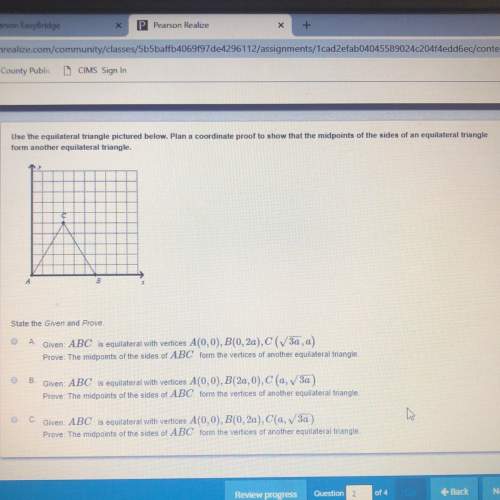
Mathematics, 30.01.2020 21:49 Jayla1029
An hourglass consists of two sets of congruent composite figures on either end. each composite figure is made up of a cone and a cylinder.
each cone of the hourglass has a height of 15 millimeters. the total height of the sand within the top portion of the hourglass is 45 millimeters. the radius of both cylinder and cone is 6 millimeters. sand drips from the top of the hourglass to the bottom at a rate of 10π cubic millimeters per second. how many seconds will it take until all of the sand has dripped to the bottom of the hourglass?

Answers: 2


Other questions on the subject: Mathematics

Mathematics, 22.06.2019 02:30, igtguith
Megan is making bracelets to sell to earn money for the local animal shelter. it takes her 1/4 hour to pick out all the beads and 1/10 hour to string them. this week, she only has 5 1/4 hours to make bracelets. how many bracelets will megan be able to make?
Answers: 1

Mathematics, 22.06.2019 03:30, madison1284
On a certain portion of an experiment, a statistical test result yielded a p-value of 0.21. what can you conclude? 2(0.21) = 0.42 < 0.5; the test is not statistically significant. if the null hypothesis is true, one could expect to get a test statistic at least as extreme as that observed 21% of the time, so the test is not statistically significant. 0.21 > 0.05; the test is statistically significant. if the null hypothesis is true, one could expect to get a test statistic at least as extreme as that observed 79% of the time, so the test is not statistically significant. p = 1 - 0.21 = 0.79 > 0.05; the test is statistically significant.
Answers: 3


You know the right answer?
An hourglass consists of two sets of congruent composite figures on either end. each composite figur...
Questions in other subjects:





History, 10.03.2020 20:01

History, 10.03.2020 20:01


History, 10.03.2020 20:01

English, 10.03.2020 20:01




